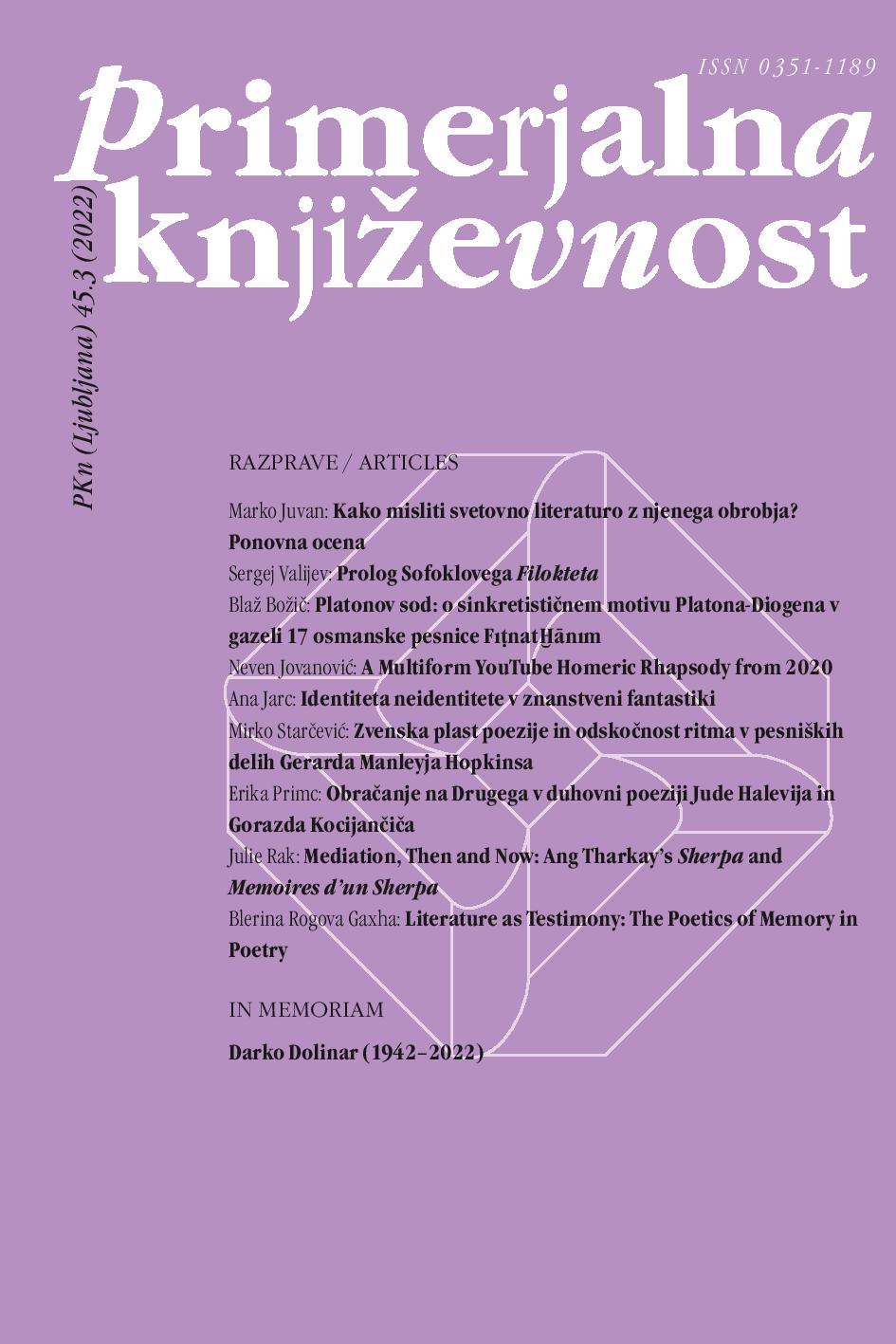The Jar of Plato: Some Thoughts About the Syncretisitic Plato-Diogenes Motive in Gazel 17 by the Ottoman poet Fıṭnat Ḫānım
DOI:
https://doi.org/10.3986/pkn.v45.i3.03Keywords:
Ottoman poetry, Greek philosophy, literary reception, syncretism of motifs, Fıṭnat Ḫānım, Plato, DiogenesAbstract
The present article explores the syncretistic Plato-Diogenes motive in the 3rd couplet of Gazel 17 (Çeçen) by Ottoman poet Fıṭnat Ḫānım. Within this passage, the motive appears in the form of Plato’s epithet ḫum-nişīn (‘jar-sitter’). The motive of Plato’s jar, even if not unknown in the Ottoman tradition, presents a curious phenomenon in the context of oriental literary reception of Greek philosophers. Contrary to the opinion that the motive stems from an arbitrary confusion between the two poets, I will demonstrate that the usage was deliberate and had its literary antecedent within the older Persian tradition (at least in Gazel 306 [Clarke] by Hafez). Furthermore, I will point out that Plato’s jar can have two different metaphoric functions, one as part of Plato’s traditional role (Plato as a symbol of the greatest level of wisdom), and the other as its creative variation (Platon as a mecnūn-like figure). Finally, I argue that the usage in the gazel by Fıṭnat Ḫānım is creative, whereby I base my opinion on, first, a comparison with two more instances of the epithet ḫum-nişīn in couplets by poets Belīġ (d. 1760/61) and ʿIzzet Molla (1785–1829), second, a comparison of the usage of the motive in the gazel by Hafez, and third, a close reading of the 3rd couplet of Fıṭnat’s gazel.
References
Andrews, Walter, Najaat Black in Mehmed Kalpaklı. <em>Ottoman Lyric Poetry: An Anthology</em>. 2. izdaja. Washington, WA: University of Washington Press, 2006. (okrajšava: AOP)
Clarke, Henry Wilberforce. <em>The Divan-i Hafiz</em>. Bethesda: Ibex Publishers, 2007.
Çeçen, Halil. <em>Fıtnat Hanımın hayatı, sanatı ve divanı</em>. Malatya: İnönü Üniversitesi, 1996.
Demirel, Gamze. <em>18. yüzyıl şairlerinden Belîğ Mehmed Emîn Dîvânı (İnceleme-Tenkitli metin-Tahlil)</em>. Elazığ: Fırat Üniversitesi, 2005.
Gibb, Elias John Wilkinson. <em>A History of Ottoman Poetry</em>. Zvezek 4. London: Luzac, 1905.
Havlioğlu, Didem. <em>Mihrî Hatun: Performance, Gender Bending, and Subversion in Ottoman Intellectual History</em>. Syracuse, NY: Syracuse University Press, 2017.
İspirli, Serhan Alkan. <em>Kadın divan şairleri ve geleneğin uzantısı</em>. Erzurum: Salkımsöğüt Yayınları, 2007.
İz, Fahīr. »Fıtnat«. <em>Brill’s Encylopaedia of Islam</em>. Second Edition. Splet. Dostop 9. 5. 2022.
Kaya, İbrahim. »Tuhfetüʼl-Haremeyn’in Metin Neşri İle İlgili Bazı Düşünceler«. <em>Uluslararası Sosyal Araştırmalar Dergisi</em> 8.39 (2015): 148–161.
Michaeli, Hiwa. <em>Goethe’s Faust and the Divan of Ḥāfiẓ: Body and Soul in Pursuit of Knowledge and Beauty</em>. Berlin; Boston, MA: De Gruyter, 2019.
Overwien, Oliver. <em>Die Sprüche des Kynikers Diogenes in der arabsichen Überlieferung</em>. Stuttgart: Franz Steiner Verlag, 2005.
Yekbaş, Hakan. »Divan Şiirinde Yunanî Şahsiyetler«. <em>Uluslararası Sosyal Araştırmalar Dergisi</em> 3.15 (2010): 281–300.


